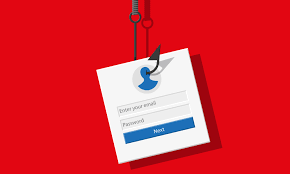
Recognizing Email Scams
Email phishing scams are malicious emails designed to trick you into giving up your personal and financial information. These phishing emails can appear from a legitimate source, such as financial institutions like your bank, a government agency, social media, or a trusted retailer. They may contain urgent or threatening language, making you feel compelled to act quickly. However, several telltale signs indicate an email may be a severe phishing scam.
Suspicious Sender
A suspicious sender is one of the most apparent warning signs of an email scam. Scammers often use fake email addresses or impersonate legitimate ones to trick users or you into opening their phishing emails anyway. Therefore, before you open an email, check the sender’s email address to ensure it is legitimate. If you are unsure, do not open the email and contact the sender directly to verify the identity theft authenticity of the text message before disclosing information in the email.
Urgent or Threatening Language
Another common sign of an email or phishing scam is urgent or threatening language. Scammers often use language that creates a sense of urgency or fear, such as “Your bank account has been compromised” or “Your identity has been stolen.” They may take payment details and threaten to take legal action or report you to authorities if you do not comply with their demands.
Suspicious Attachments or Links
Email scams often contain suspicious attachments or links that, when clicked, can install malware or redirect you to another phishing or malicious website or fraud website or site. Before you click on links in malicious attachments or download attachments, verify that they are legitimate by hovering over the link or attachment and checking the URL. If the connection or passion appears suspicious, do not click on it.
Protecting Yourself from Email Scams
Protecting yourself from email scams requires a combination of vigilance and common sense. Here are some actionable tips to help you stay safe:
Use Antivirus Software
Antivirus software can help detect and remove malware from your computer, often installed via email scams or other phishing attacks or emails. Ensure that your antivirus software is up-to-date and set to scan your computer regularly.
Keep Your Software Updated
Keeping your software updated is essential to protecting yourself from email scams. Software updates often include security patches that can help protect your computer from vulnerabilities that scammers may exploit.
Verify Emails and Links
Before opening an email, link, or website and clicking on a link, verify that it is legitimate. Check the link and sender’s email address, hover over links to verify the link and URL, and double-check attachments before downloading.
Be Cautious of Urgent or Threatening Language
Scammers often use urgent or threatening language to create a sense of urgency or fear. Be cautious of emails or social media that use this language, and take the time to verify their authenticity before taking any action.
Protect Your Personal and Financial Information
Never give out your personal or financial information via email. Legitimate organizations and legitimate companies will never ask for this confidential information via email, so be cautious of any email that asks for it.
Email scams are becoming more sophisticated and are constantly evolving, making it challenging to stay ahead of them. However, by recognizing the signs of email scams and taking actionable steps to protect yourself, you can reduce your risk of falling victim to these scams. Remember to stay vigilant, use common sense, and protect your personal and financial information.
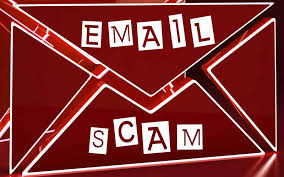
Use Two-Factor Authentication
Two-factor authentication (2FA) adds an extra layer of security to your accounts by requiring users to use a second form of authentication besides their account password. This can help prevent scammers and cyber criminals from accessing your accounts even if they have your password.
Educate Yourself
One of the most effective ways to protect yourself from email and other phishing emails and scams is to educate yourself on how they work and what to look out for. Stay informed on the latest email and phishing scam trends and share this information with others to help protect them.
Report Scams
If you receive an email scam, report it to the appropriate authorities. This can help prevent others from falling victim to the same scam.
Use a Spam Filter
A spam filter can help reduce the number of email scams in your inbox. Many email providers offer built-in spam filters, but you can also use third-party ones for added protection.
By implementing these measures, you can reduce your risk of falling victim to these phishing email attacks and email scams and protect yourself and your most sensitive data and information.
Visualizing the Information
The following mermaid diagram illustrates the steps you can take to protect yourself from spam email scams:
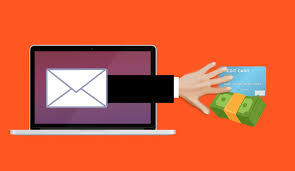
The various types of email scams
This article discusses the various types of email scams, including phishing, malware, phishing attacks, and fake and spam emails. We’ve also provided actionable tips and measures to protect yourself from these scams, including using antivirus software, keeping your software updated, verifying suspicious attachments or links, and being cautious of urgent or threatening language.
In addition, we’ve discussed the importance of recognizing the signs of email scams, such as suspicious senders, urgent or threatening language, and suspicious attachments or links. We’ve also emphasized educating yourself on the latest email scam trends and reporting suspicious activity or scam emails to the appropriate authorities.
To help you better understand the information presented in this article, we’ve provided a mermaid diagram illustrating the steps you can take to protect yourself from email scams. We hope this visual aid helps you better comprehend the information presented and implement the measures of best protection we discussed.
Overall, we believe that the information presented in this article is valuable, informative, and actionable. By implementing the measures outlined in this article, you can reduce your risk of falling victim to phishing attacks via email and scams and protect yourself and your sensitive information.
Thank you for choosing our content and website as your source of information. We are committed to providing high-quality, informative content that helps you stay safe and informed.
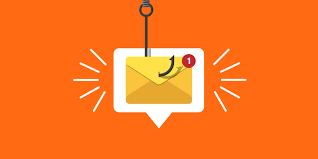
Email scams are a growing concern in the digital world
Email scams are a growing concern in the digital world, with cybercriminals becoming more sophisticated and using advanced techniques to trick unsuspecting victims. Therefore, it is essential to be aware of these scams and take steps to protect yourself from falling prey to them. This article will provide comprehensive information on email scams, recognizing them, and protecting yourself.
Types of Email Scams
There are several types of email scams, and they vary in their methods of operation. Some of the most common types of phishing email scams include:
Phishing scams –
These are scams where cybercriminals send you malicious code or attachments in an email pretending to be from a legitimate company, government refund, or organization, asking you to click on a link to install malicious software or website and provide personal information like your username, password, or credit card details.
Nigerian scams –
These fake websites are scams where the scammers claim to be wealthy individuals from Nigeria who need your help to transfer money out of the country. They promise to share some of the money with you in exchange for your help.
Lottery scams –
These are scams where the scammers send you an email claiming that you have won a large sum of money in a lottery, and they need you to provide personal payment information or pay a fee to claim the prize.
Investment scams –
These are scams where the scammers claim to have an investment opportunity that can yield high returns quickly. They ask you to invest your money, promising you quick profits, but in reality, there is no investment opportunity, and you end up losing your money.
Recognizing Email Scams
Recognizing email scams is crucial to protecting yourself from them. Here are some signs that an email may be a phishing attack or fraud or email or voice phishing, or scam:
The email is from an unknown sender or a suspicious-looking email address.
The email contains spelling and grammatical errors or is poorly written.
The email contains an urgent or threatening text message, asking you to give your account credentials or information technology either act immediately and give bank details quickly or face dire consequences.
The email asks you to provide your username, password, and bank or credit card details.
The email message asks you to click on a link or download the text message below as an attachment.
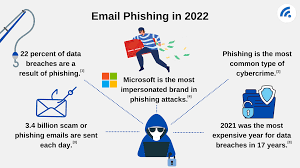
Protecting Yourself from Email Scams
Protecting yourself from email scams requires you to be vigilant and take appropriate measures. Here are some tips to help you protect yourself from email scams:
- Do not click on links or download attachments from unknown or suspicious-looking emails.
- Do not provide personal information like your username, password, or credit card details in response to unsolicited emails.
- Use antivirus software and keep it updated regularly.
- Use strong passwords and avoid using the same password for multiple accounts.
- Be cautious when investing your money, and thoroughly research before investing in any opportunity.
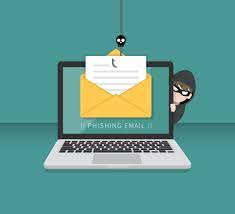
In conclusion, email scams are a severe threat in today’s digital world, and it is essential to be aware of them and take appropriate measures to protect yourself. Following the tips in this article can minimize the risk of falling prey to these scams. Stay safe online!
CoopBusiness is a revolutionary cooperative business-building platform that empowers individuals to become entrepreneurs, business owners, and financially independent.
As a member, you’ll receive top-level business mentorship, access to our proprietary business systems, and the opportunity to access the funds you want to turn your business ideas into reality.